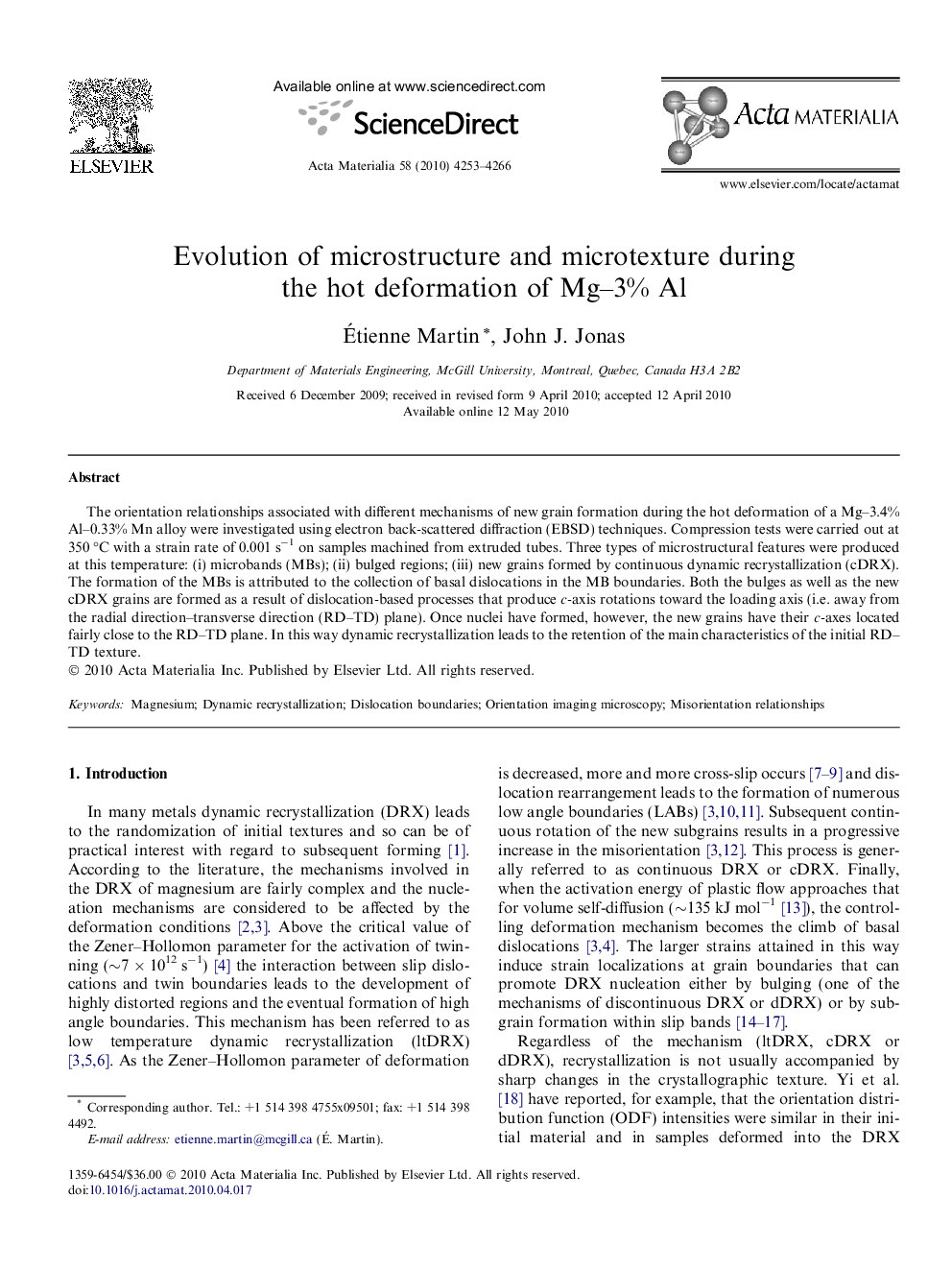| Article ID | Journal | Published Year | Pages | File Type |
|---|---|---|---|---|
| 1447511 | Acta Materialia | 2010 | 14 Pages |
The orientation relationships associated with different mechanisms of new grain formation during the hot deformation of a Mg–3.4% Al–0.33% Mn alloy were investigated using electron back-scattered diffraction (EBSD) techniques. Compression tests were carried out at 350 °C with a strain rate of 0.001 s−1 on samples machined from extruded tubes. Three types of microstructural features were produced at this temperature: (i) microbands (MBs); (ii) bulged regions; (iii) new grains formed by continuous dynamic recrystallization (cDRX). The formation of the MBs is attributed to the collection of basal dislocations in the MB boundaries. Both the bulges as well as the new cDRX grains are formed as a result of dislocation-based processes that produce c-axis rotations toward the loading axis (i.e. away from the radial direction–transverse direction (RD–TD) plane). Once nuclei have formed, however, the new grains have their c-axes located fairly close to the RD–TD plane. In this way dynamic recrystallization leads to the retention of the main characteristics of the initial RD–TD texture.
